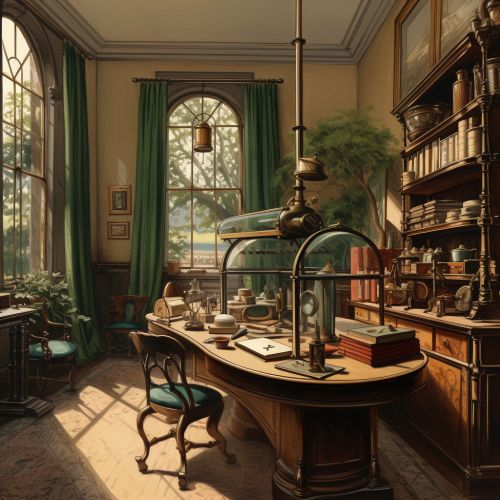James Clerk Maxwell
Early Life
James Clerk Maxwell was born on 13 June 1831 in Edinburgh, Scotland. His father, John Clerk Maxwell, was a lawyer, while his mother, Frances Cay, died when he was only eight years old. His early education was provided by his father and his aunt, Jane Cay, who moved in with the family after Frances' death.


Maxwell showed an early interest in the natural world, often asking profound questions about the nature of physical phenomena. He was particularly fascinated by the properties of light, a curiosity that would shape his future career.
Education
Maxwell attended the Edinburgh Academy, where he excelled in mathematics and science. He won the school's mathematics medal and first prize for both English and poetry. He went on to study at the University of Edinburgh from 1847 to 1850, before moving to the University of Cambridge.
At Cambridge, Maxwell studied under the tutelage of William Hopkins, whose rigorous methods helped shape Maxwell's approach to scientific research. Maxwell graduated from Cambridge in 1854, having earned the title of Second Wrangler and winning the Smith's Prize for his work in mathematics.
Career and Research
Maxwell's first significant contribution to science was the formulation of the theory of electromagnetism. This work, which was published in 1865, demonstrated that electricity, magnetism, and light are all manifestations of the same phenomenon: the electromagnetic field. This groundbreaking work paved the way for much of modern physics, including quantum mechanics and special relativity.
Maxwell also made significant contributions to the field of thermodynamics. He formulated the Maxwell relations, which are a set of equations that describe the behavior of thermodynamic systems. He also introduced the concept of the Maxwell's demon, a thought experiment that has had significant implications for the second law of thermodynamics.
In addition to his work in physics, Maxwell made significant contributions to the field of colorimetry. He formulated the theory of color vision, demonstrating that all perceivable colors can be produced by mixing red, green, and blue light in varying proportions. This work laid the foundation for the development of color photography.
Personal Life
Maxwell married Katherine Mary Dewar in 1858. The couple had no children. Maxwell was known for his strong Christian faith, which he saw as being compatible with his scientific work. He died of abdominal cancer on 5 November 1879, at the age of 48.


Legacy
Maxwell's work has had a profound impact on the field of physics. His equations of electromagnetism have been called the "second great unification in physics" after the first one realized by Isaac Newton. His work has also had significant implications for other fields, including electrical engineering and quantum computing.
Maxwell is widely regarded as one of the greatest scientists in history. In a poll conducted by Physics World in 1999, Maxwell was voted the third greatest physicist of all time, behind only Albert Einstein and Isaac Newton.
